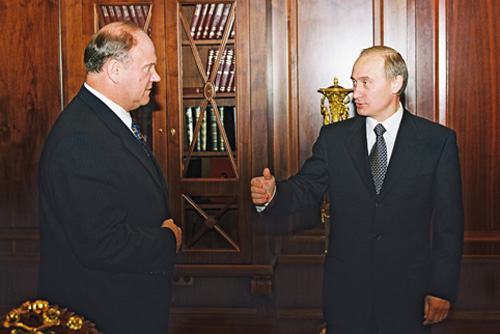Blocked Blocs
 As predicted, Vladimir Putin won the March 4 Russian presidential elections with over 60 percent of the vote. What followed were the expected accusations of illegitimacy from members of the opposition. Fraud possibly occurred in the election, especially in southern provinces such as Chechnya, where over 93 percent of the vote went to Putin, a puzzling result that has become a tradition in recent Chechen elections. However, this level of fraud did not approach the levels that were reportedly seen in the December Duma elections. The protests have since died down, partly due to the fact that Putin would have gotten 50 percent of the vote and the victory without any fraud, closing a fairly predictable chapter of Russia’s election cycle.
One unforeseen, or at least unnecessary move by Putin and United Russia was the relaxation of the requirements necessary to form political parties. The new law, which passed unanimously in the Duma, lowers the requirement for a political party to 500 members from the original 40,000. Though the law definitely stems from the demands of the street opposition that has been protesting through the winter, and has been praised as such by both United Russia and the opposition, the real effect of the law may be minimal. Its impact on the national scale – the Duma and the presidency that the opposition were protesting – is minimal given that the Duma will not be reelected until 2016, after four of the six years of Putin’s term. The law also does not ease restrictions on the creation of election blocs, which are perhaps a more realistic vision of an entity that would actually challenge United Russia.
As predicted, Vladimir Putin won the March 4 Russian presidential elections with over 60 percent of the vote. What followed were the expected accusations of illegitimacy from members of the opposition. Fraud possibly occurred in the election, especially in southern provinces such as Chechnya, where over 93 percent of the vote went to Putin, a puzzling result that has become a tradition in recent Chechen elections. However, this level of fraud did not approach the levels that were reportedly seen in the December Duma elections. The protests have since died down, partly due to the fact that Putin would have gotten 50 percent of the vote and the victory without any fraud, closing a fairly predictable chapter of Russia’s election cycle.
One unforeseen, or at least unnecessary move by Putin and United Russia was the relaxation of the requirements necessary to form political parties. The new law, which passed unanimously in the Duma, lowers the requirement for a political party to 500 members from the original 40,000. Though the law definitely stems from the demands of the street opposition that has been protesting through the winter, and has been praised as such by both United Russia and the opposition, the real effect of the law may be minimal. Its impact on the national scale – the Duma and the presidency that the opposition were protesting – is minimal given that the Duma will not be reelected until 2016, after four of the six years of Putin’s term. The law also does not ease restrictions on the creation of election blocs, which are perhaps a more realistic vision of an entity that would actually challenge United Russia.
The Russian opposition may be able to overcome the restrictions if the Social Democratic Union, a proposed election bloc, actually forms before the 2016 elections. The party has been conceived as a broad coalition of Russia’s left leaning parties, but it would cover a swath of the ideological spectrum that approaches Siberian proportions. From free market liberals to social democrats to socialists to hardcore Soviet communists, the differences in the unifying parties would not simply be based on political control of the party, but on real policy and ideological differences. The largest section of the union would be the communists, whose views and leadership may not be palatable to the other parties, but without whom the union is severely weakened.
These underlying divisions may be furthered by the ability of parties to form with very small memberships under the new party formation laws. The freeing up of the opposition’s ability to make parties may even end up diminishing the limited representation they already have in the legislature. The factionalizing may take A Just Russia, a social democratic party, below the 5 percent threshold for Duma representation, above which it barely floats. The apparent relaxation of power consolidation by the Kremlin may in fact end up working in Putin and Medvedev’s favor.
Perhaps the most disheartening aspect of future elections for the Russian opposition is that they may have reached the high point of their unity this past winter. The opposition and its supporters are “opposed” primarily to the man of Putin, a man who is unlikely to run again in 2018. Defeating United Russia, a more disciplined and better-structured party, without this focal point may be difficult, especially given that any Social Democratic Union would probably end up falling on a similar point on the ideological spectrum. Without a unifying cause, the Russian opposition may have a hard time ever amassing the public support to do any more than what they’ve done best: oppose things.
